- Provide Growth Factors to Support Optimal Healing
- Amnion and Chorion Sides
- Orientation Slit
- Available in 4 sizes
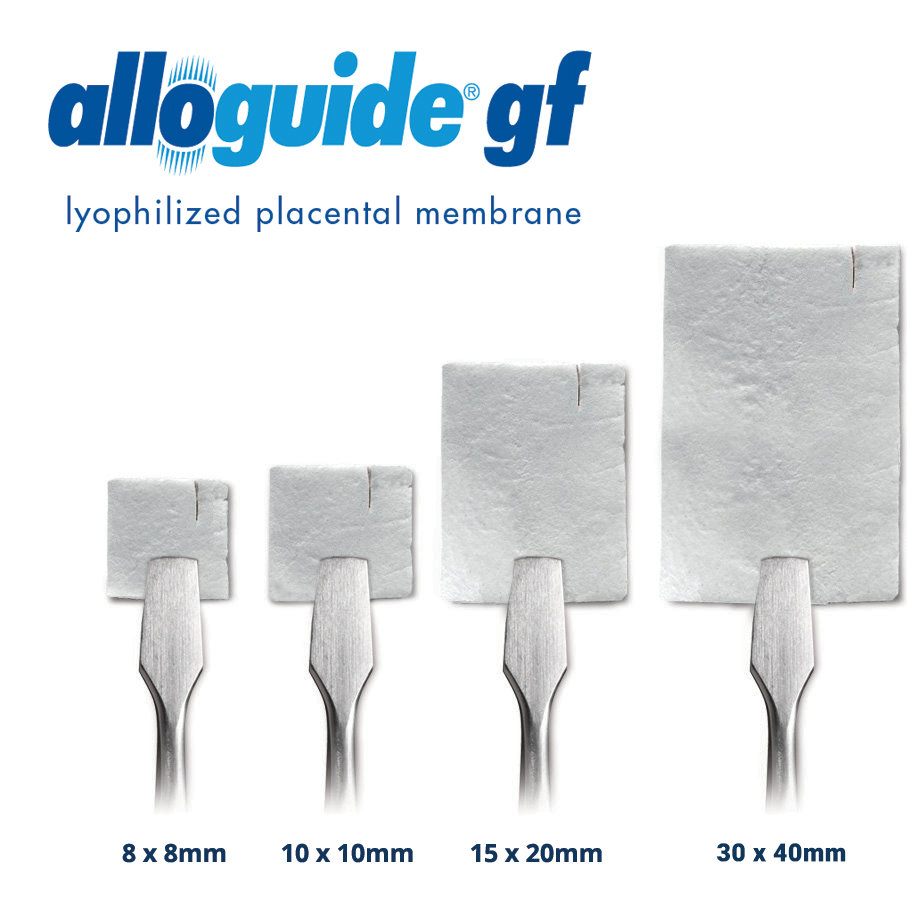
alloguide gf is a lyophilized placental membrane that preserves its endogenous growth factors associated with the repair of oral wounds. alloguide gf is an ideal membrane to support Guided Tissue Regeneration (GTR) and Guided Bone Regeneration (GBR) dental procedures as it retains the high levels of regenerative growth factors naturally present in the placental membrane.
Placental Tissue is a rich source of extracellular matrix proteins and growth factors that have been shown to be involved in the natural wound repair process (1) and is commonly used in a wide array of therapeutic applications, including wound care and orthopedics. (2, 3) The processing and preservation of the placental tissue allograft will influence the preservation of those growth factors. (4, 5)
- Extraction socket preservation
- Ridge and sinus augmentation
- Periodontal defects
- Sinus elevation
- Grafting for implant placement
- alloguide gf is processed using a proprietary freeze-drying solution during lyophilization.
- Preserves protein structures and maintains bioactive capabilities of all the important wound healing elements in the placental tissue
- Preserves the extracellular matrix
- Maintains the natural tissue thickness
- Provides excellent handling characteristics that allow for ease of application
- Manufactured by a FDA registered and AATB accredited facility.
- Maintain stringent internal processes, policies and procedure
- Processed under aseptic condition
- USP 71 sterility testing performed on every lot
H & E is the combination of two histological stains:
- Hematoxylin - stains cell nuclei blue
- Eosin - stains extracellular matrix pink
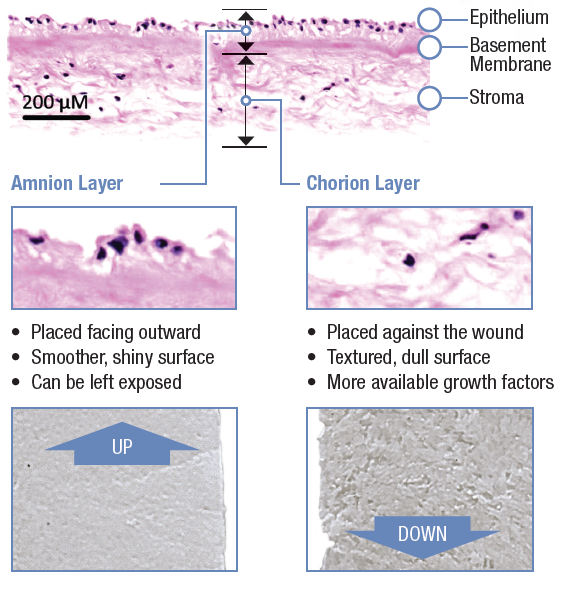
alloguide gf lyophilized placental membrane (A) is enclosed inside a sterile inner pouch (B), then enclosed in a secondary outer pouch (C). The outer pouch is contained in a labeled box (D).
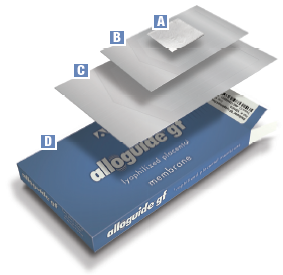
alloguide gf has 2 distinct sides: Amnion (E) and Chorion (F). The Amnion side is smooth while the Chorion side is rough. The graft has one orientation guide-slit (G) that when positioned on the top right, the Amnion side is facing upward (towards you). Trim excess graft as necessary.
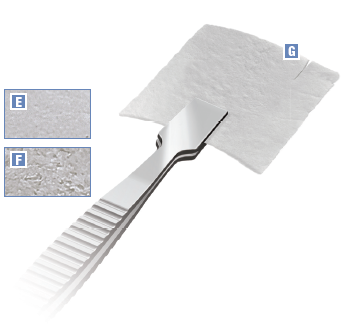
Using sterile instruments, apply the graft directly onto the wound site with the Chorion side facing down (the wound site). The graft should absorb moisture directly from the wound site. If necessary, a few drops of sterile saline may be added to the graft after it has been applied.
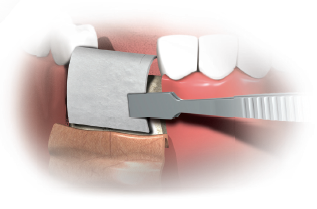
Footnote References:
(1) Chopra and Thomas 2013. J Biomim Biomater and Tissue Eng (2) Brantley and Verla 2015. Advances in Wound Care (3) Heckmann et al 2016. American Journal of Orthopedics (4) McQuilling et al 2017. Wounds (5) Paolin et al 2016. Cell Tissue Bank (6) Data on File
